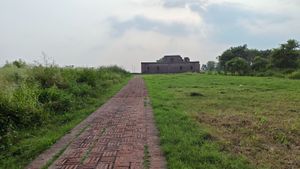As a school kid, something that remained with me was how Chandigarh was described in my geography textbook – ‘the first planned city of India’. Many moons later, I had the opportunity to be part of Punjab’s first travel mart ‘Rangla Punjab’ where I visited Chandigarh. And looking to do something offbeat I had a chance meeting with Pamaljeet Singh Sidhu, Founder, Chandigarh Architecture Lab who took me on a morning walk at Panjab University, a great way to discover why the city is called ‘City Beautiful’.
History beckons
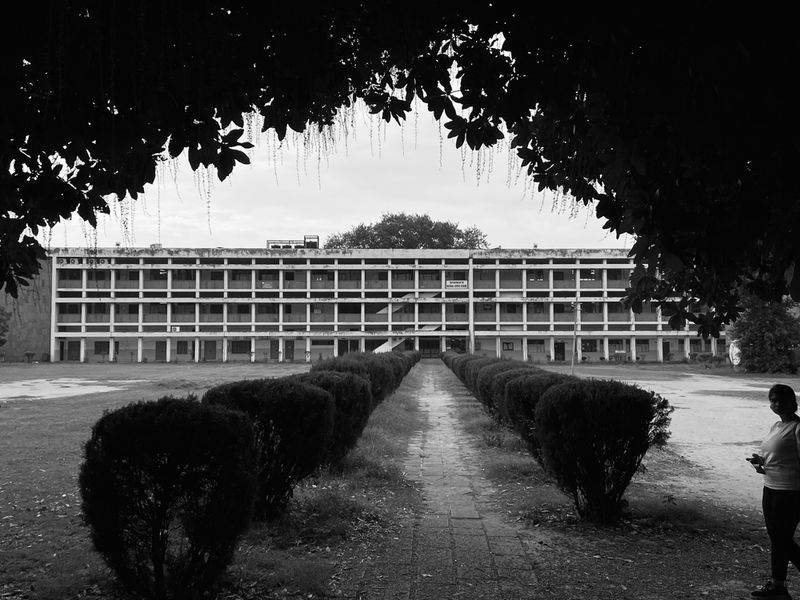
Chandigarh, created after India’s independence, was based on a master plan by Swiss French architect Le Corbusier. The initial plans by Polish architect Maciej Nowicki and American planner Albert Mayer were used as the base. Along with Le Corbusier, Pierre Jeanneret, a Swiss architect who stayed in Chandigarh till his death, have designed most of the important buildings in the city. Architect couple Jane Drew and Maxwell Fry have also contributed to the built architecture in their three years stay here.
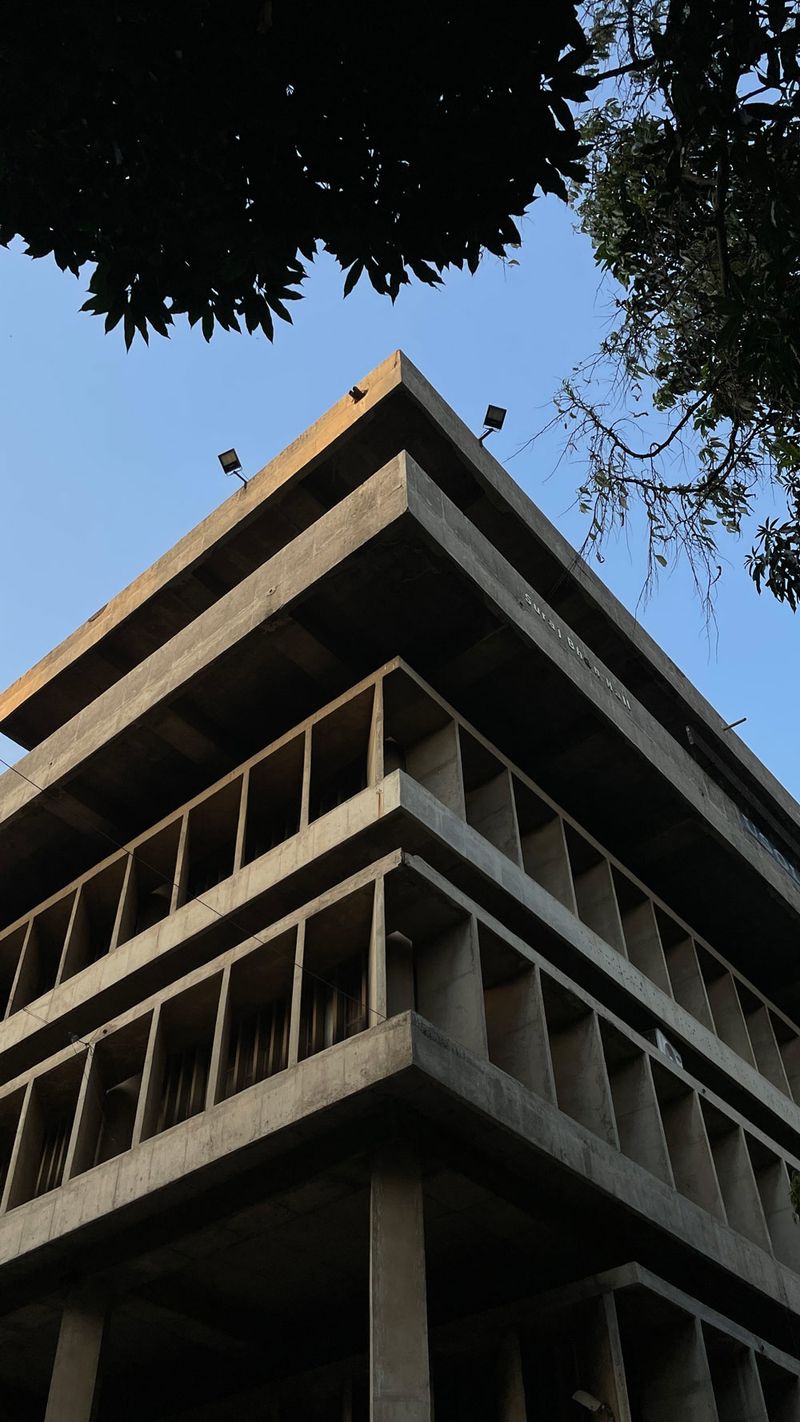
The University of the Punjab that was originally established in 1882 at Lahore Pakistan, had its administrative office in Solan post the partition and the existing red sandstone structure or Panjab University started in 1958. Designed by Pierre Jeanneret, and renowned Indian architect B.P. Mathur, the architecture at Panjab University is an amalgamation of both their ideas and thoughts. The Construction cell project of Panjab University started with Jugal Kishore Choudhury who made the Punjab Engineering College and the Chemical engineering block.
Architecture calling
The university's chequerboard layout is spread over 550 acres in Sectors 14 and 25. The expansive space has among others the Central Library, Fine Arts Museum, Gandhi Bhawan, Dr Harvansh Singh Judge Institute of Dental Sciences, sports complex, health centre, dolphinarium, student centre, shopping centre, University Institute of Engineering and Technology, and Institute of Biological Sciences.
“The Panjab University is the finest work of Jeanneret as apart from this he has primarily worked in housing. The scale of this project allowed him to experiment with materials and forms. The student centre has a nice, exposed concrete and the ramp here is the main access to the first floor, acts as a shading device to the block and it also becomes part of the building as you go up. It was conceived in the 1960s and was way ahead of its time – in terms of accessibility and climate responsive design,” says Sidhu.
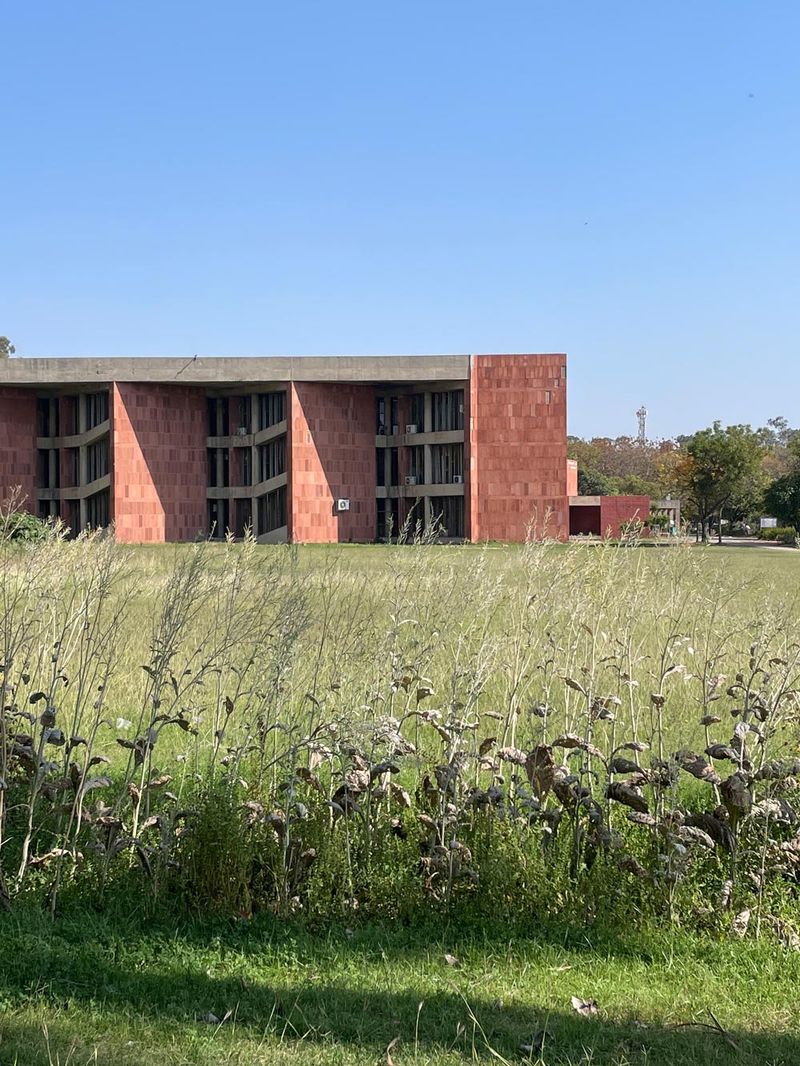
The pivoted window design here (smaller windows within larger ones) is a fine example of Le Corbusier's Modulor, a universal measuring system that he developed to give a mathematical proportion to his designs. The longer shuttering in the windows is a typical architectural element here.
Form meets function
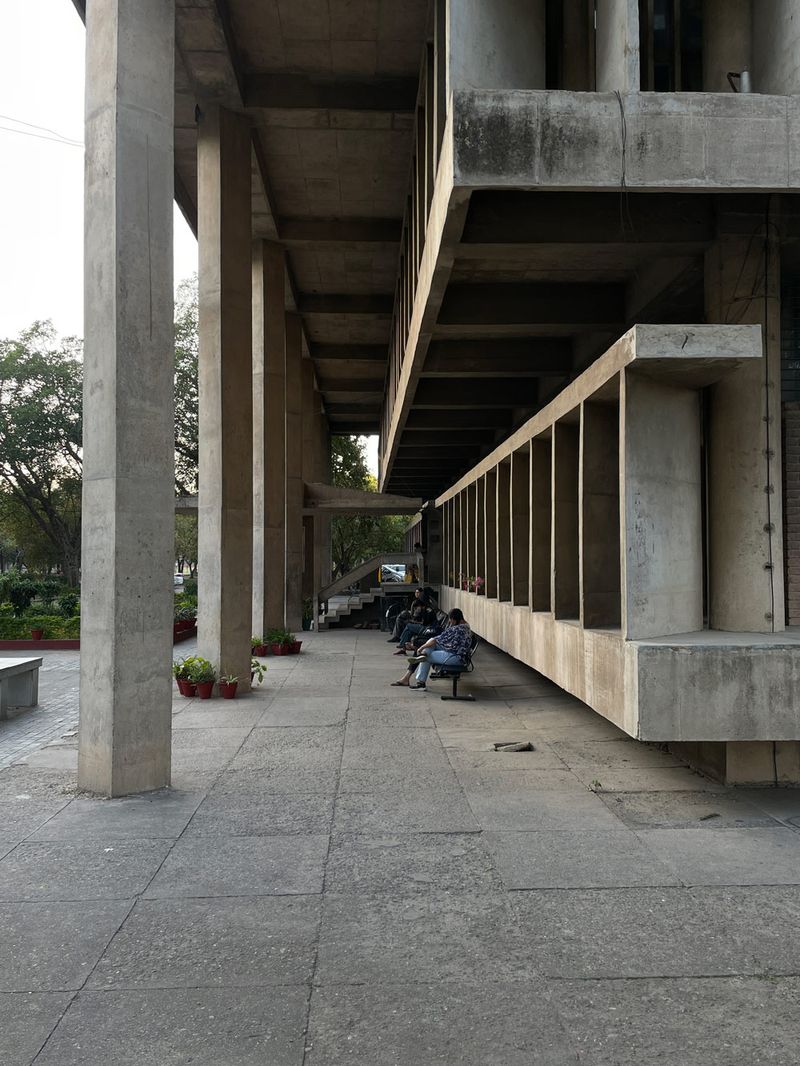
The buildings are designed in a manner that it works practically for its intended use – the student block for instance has all facilities for students including a café in its vicinity. The library buildings have been designed to be centrally air conditioned and have reading chambers allotted to different kinds of students.
“The international architects started work in March in Shimla and were exposed to the harsh summers of Chandigarh later. They built the architect’s office, engineer’s office, and plant nursery first. Working 6.5 days a week, the team have made 3420 homes in three years. The façade of the library is a little more playful and being in the North East side it does not get much sunlight so the light comes from the skylight and the windows here,” says Sidhu.
Academic blocks and auditoriums have been kept together as well. The science block has been tilted in a way that the west side is smaller and heat gain is less. The structural grid is used as sun breakers here and being on an angle, this absorbs less sunlight keeping the building cool. As stone was expensive, it has been used limitedly to only add some definition and bricks have been used extensively. The health centre here has two courtyards and is naturally lit by ensuring the construction allows for sunlight to filter in and the curved pillars ensure that there is no obstruction when there is any movement.
Gandhi Bhawan
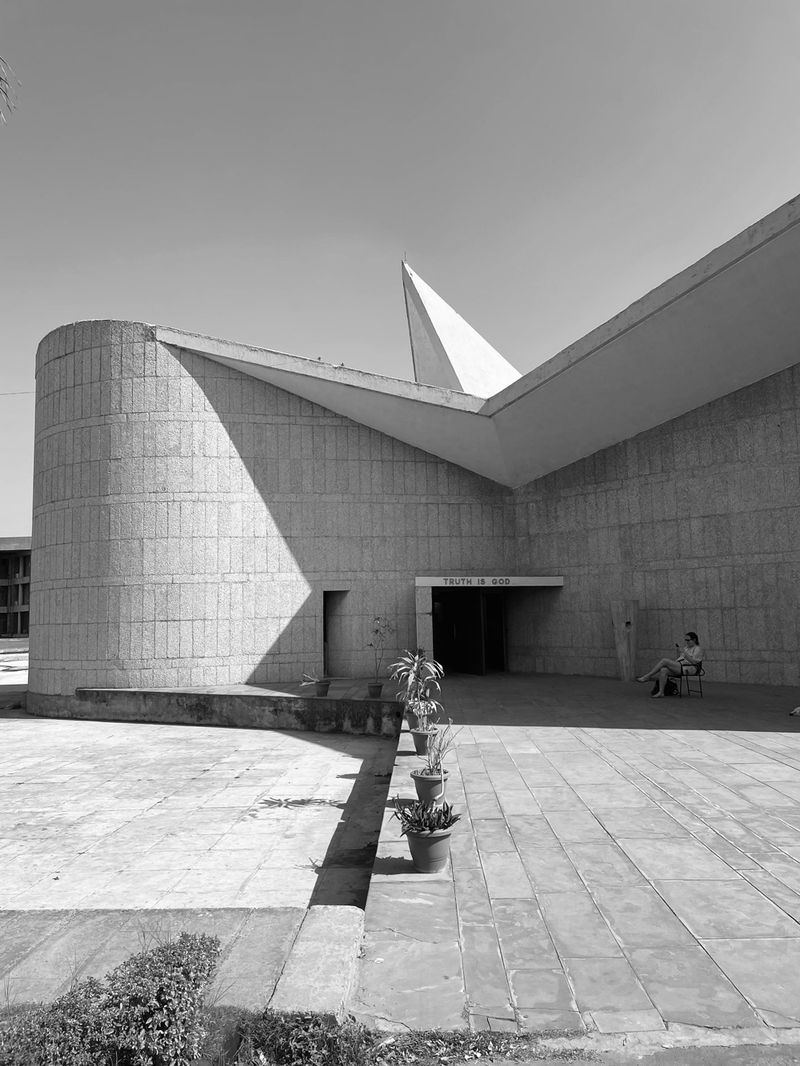
One of the finest works of Jeanneret, the white hued Gandhi Bhawan is also part of the Panjab University campus and is in complete contrast to the red sandstone facades of the other buildings here. Said to be his finest work, this is the centre of the University’s academic block and was made as a tribute to Mahatma Gandhi. Made with small pieces of marble, the cladding pattern is geometric that lends the building a nice synchronous feel. This building is a masterpiece and has a library, seminar hall, auditorium, and reading room. A water body surrounds the building and the marble use has been inspired from the Salim Chishti’s tomb in Fatehpur Sikri.
Inspiring architects
The long corridors seen here were once criticised but are an element that is being used extensively in designing today. These helped students move from one block to the other in the shade. “While we conduct walks, we have had an opportunity to observe the nuances of their work. One thing I can say is that they were way more sustainable in terms of their architectural practice. They have 42 kinds of houses and we know what works and what does not. In Chandigarh it is all about Indian modernism and that has inspired architects as these forms are subconsciously in your mind and it makes its way into our designs. “We have one of the finest buildings in the world next to us so we must learn,” says Sidhu. And it is certainly hard to disagree even as built architecture is in the focus for both practice and sustainability.
For enquiries, email on hello@chandigarharchitecture.com and keep an eye on their Instagram page for announcements of their walks.


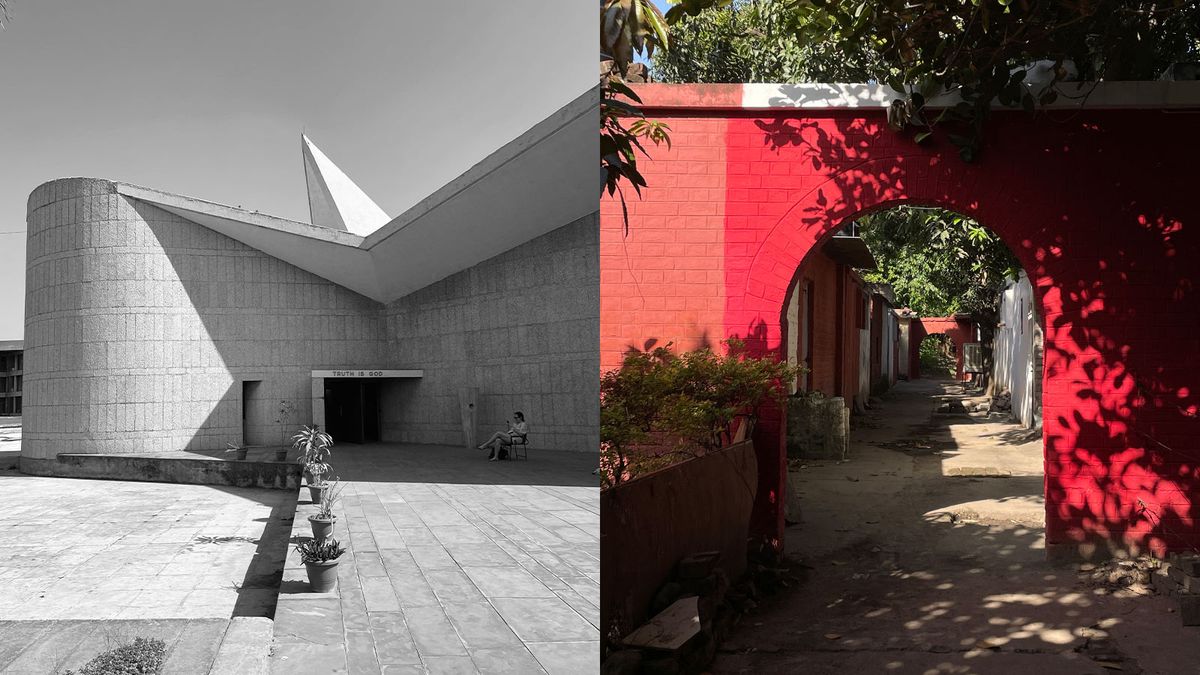
_1711949179633_thumb_300.jpeg)
